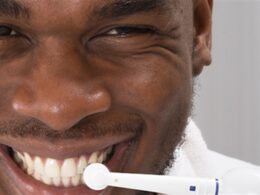Introduction
High-speed dental handpieces are essential to modern practice, so having a well-designed and error-free protocol for routine maintenance and repair of these tools can mean the difference between safe, efficient operations and costly downtime. For example, did you know that the turbines of DENTALEZ’s Star handpieces can be changed by your staff in-office, saving time and money? See the Troubleshooting section below for a short video on how to do it.
Well-maintained instruments run better, last longer and help create a better practice for you and your patients. The CDC’s guidance on dental handpiece maintenance recommends that dental professionals “clean and heat-sterilize handpieces and other intraoral instruments that can be removed from the air and water lines of dental units.” In this article, we will discuss proper routine maintenance for both lubricated and LubeFree Star models, including a few DOs and DON’Ts for cleaning, lubrication, sterilization, troubleshooting and dental handpiece repair.
Follow Instructions and Observe Changes
Before we get into specific steps, there are a few overarching rules to keep in mind about dental handpiece maintenance:
- Always read and follow the instructions for use and care. Because dental handpieces are medical devices, manufacturers must follow FDA guidelines in creating scientifically validated instructions for end users to assure patient safety. As such, they should be your definitive source for information on maintaining your instruments. (For example, using air-driven handpieces at manufacturer-recommended pressure levels helps extend their longevity and lessens the likelihood of them failing while in use.) User manuals for all of DENTALEZ’S Star handpieces can be found here.
- You should also establish a schedule and document your cleaning and maintenance procedures to reduce the likelihood of surprise equipment failures. Our Guide to Effective Disinfection in Today’s Dental Practice, published in response to the COVID-19 pandemic, is a comprehensive discussion of cleaning, disinfection and sterilization in dental offices that emphasizes the importance of training your staff and keeping good cleaning and maintenance records.
- A third baseline rule to remember when using dental handpieces is to always be observant. Take note of how your handpieces operate when new (i.e., how they sound and how they feel in your hand). When they begin to feel or sound different, check for early signs of wear and tear.
Cleaning the Dental Handpiece
Before first use and after each patient, your Star dental handpiece should be cleaned to remove debris.
When cleaning a dental handpiece after each patient, it is important to:
- Run the handpiece for 20-30 seconds to flush out any remaining air and water.
- Disconnect the handpiece from the air tubing or swivel.
- Wipe down the handpiece with isopropyl alcohol on a soft cloth or brush. Do not submerge in water or any cleaning agent.
- Use a cotton swab dipped in alcohol to clean the fiber-optic lighting surface and the back of the handpiece where it connects to the air tubing or swivel.
1. Use a cotton swab dipped in alcohol to clean both fiber-optic lighting surfaces and internal surface of the back of the handpiece.
Dry the handpiece thoroughly.
DO: Clean handpieces as soon as possible after patient use. This makes the task easier and the handpieces less prone to unhygienic buildup.
DON’T: Use chemical wipes, disinfectant sprays or ultrasonic cleaners on dental handpieces. Besides degrading the outside housing of the handpiece, residual chemicals can get into the handpiece and cause corrosion and/or premature failure.
Your instrument is now ready for the next step in your maintenance protocol:
- For lubricated handpieces, see Lubrication.
- For LubeFree handpieces, skip Lubrication and go to Sterilization.
Important note about LubeFree handpieces: Since lubrication is a multi-step process that should not be rushed, LubeFree Star handpieces offer a significant savings, both in staff labor and in the cost of lubrication supplies. DENTALEZ is the only company that offers LubeFree handpieces, which are protected by a one-year warranty.
Lubrication
If your handpiece is LubeFree, you should skip this step and go to Sterilization.
After your handpiece has been surface cleaned and dried, lubricate according to your Star user manual. Generally, you will:
- Confirm that the bur is in the chuck and turn the handpiece upside down. (Never operate the handpiece without a bur in place.)
- Assemble the conical red tip applicator into a DentaLube II bottle cap.
- Place three (3) drops of DentaLube II into the drive air tube or drive air slot at the rear of the handpiece, as shown below. This enables sufficient lubrication of the bearings.
- Reconnect the handpiece to the air tubing or swivel and run it for 20-30 seconds to expel excess lubricant.
The drive air tube is the smaller of the two large holes in a fixed back-end and the larger oval hole in a swivel back-end. - Remove bur from chuck.
- Dry the outside of the handpiece throoughly.
DO: Whether lubricating manually or using a dental handpiece maintenance unit, be sure to run the handpiece long enough that excess lubricant won’t congeal inside the handpiece during sterilization, as this will cause it to run sub-optimally. For best results, run it over a white paper towel until only clean lubricant (free of bioburden) comes out.
DON’T: Accidentally lubricate a LubeFree handpiece! If a LubeFree instrument is lubricated even once, it must then be lubricated regularly for the rest of its life.
If you prefer lubricated handpieces, consider an automatic handpiece maintenance machine, or “lubrication station.” A discussion of the pros and cons of investing in this time-saving device can be found here.
Sterilization
Sterilization processes vary somewhat depending on the size of your practice and the type of equipment you use. A discussion of different types of sterilization and some common pitfalls associated with each can be found here. You should always read and follow manufacturer instructions when using a sterilization device.
Steps for handling the instruments prior to and after sterilization:
- If you haven’t already, remove and clean the bur. Insert in an autoclavable bur block.
- Bag your handpieces. Use bags designed for your handpieces, one per bag, and make sure they are properly sealed.
- Load the handpieces into instrument trays or standard sterilization trays and load the trays into the sterilization device. Do not exceed the sterilizer manufacturer’s guidelines for load capacity.
- Run the autoclave. DENTALEZ recommends:
- Gravity Type Autoclave – Minimum of 15 minutes at 132° C or minimum of 30 minutes at 121° C. Do not exceed 135° C.
- Pre-Vacuum Autoclave – Minimum of 4 minutes at 132° C.
- Dry the handpiece for 30 minutes minimum using the sterilization dry cycle and allow the handpiece to cool to room temperature in bag prior to use. If moisture is present, increase your sterilizer dry cycle appropriately.
- Allow the handpieces to return to room temperature on their own in the sterilization bag before using on a patient.
DO: To achieve proper sterilization of instruments, follow your machine’s user instructions regarding capacity or load limits.
DON’T: Run dental handpieces under water to cool them down, as this can damage the turbine and/or bearings.
For further discussion of cleaning, disinfection and sterilization, as well as the importance of effective vs. ineffective disinfecting techniques in today’s post-pandemic healthcare climate, see our Guide to Effective Disinfection in Today’s Dental Practice.
Troubleshooting Dental Handpieces
Common issues that may arise with Star dental handpieces can be diagnosed and often addressed by you and your staff. If your issue is not listed here or cannot be resolved with these tips, you can get help with troubleshooting your handpieces by calling our repair team at 866-DTE-INFO or completing our online form.
Handpiece Issues
Problem: Tactile or rough feel, handpiece not operating smoothly
Possible Cause: Turbine could be worn out and ready to break down
Solution: Send for repair or replace the turbine yourself. The biggest benefit of Star handpieces is that they are the easiest handpieces in the industry to repair in-office. Watch our technician demonstrate installing a new turbine in minutes:
Problem: Lack of power
Possible cause: Turbine could be worn out and ready to break down
Solution: Send for repair or replace the turbine.
Problem: Bur locks in the autochuck
Possible Cause: Debris buildup in the chucking mechanism
Solution: Clean with Junk-Out High-Speed Chuck Cleaner.
Problem: Bur locks in the autochuck
Possible Cause: Use of non-ISO compliant burs
Solution: Always use ISO burs less than 24 mm in overall length and with a shank length of at least 7.3 mm.
Problem: Bur slips in the autochuck
Possible Cause: Bur is not properly installed
Solution: Remove bur from autochuck per the manufacturer’s instructions and re-install correctly.
Problem: Loss of light, rods look black when viewed straight on
Possible Cause: Fiber-optic rods could be broken
Solution: Send to manufacturer or authorized handpiece repair service for repair.
Air Line Issues
Problem: Loss of air pressure
Possible cause: Air tubing issues such as a leak or a twist
Solution: Locate the source of the leak and repair or replace the tubing.
Problem: Water entering turbine through the air line
Possible cause: Faulty seals in air compressor, causing condensation to build up and escape into air line
Solution: Check air compressor seals and replace if necessary.
Water Line Issues
Problem: Loss of water pressure
Possible Cause: Limescale buildup in water port caused by hard water
Solution: Use a small wire or brush, such as an interdental brush, to clean out the water port.
Problem: Loss of water pressure
Possible Cause: Leak in the water line
Solution: Locate the leak and repair or replace the tubing.
Dental Handpiece Repair
If troubleshooting fails to solve your issue and dental handpiece repair is needed, consult your Star user manual and/or initiate a repair or replacement process. DENTALEZ’s Maintenance & Repairs page offers contact options for initiating repair of your handpieces. A link at the bottom of the page takes you to the repair initiation form.
DO: Be careful with third-party equipment servicers. Do your homework before choosing one to be sure they are using original Star parts.
DON’T: Skimp on handpieces for your practice. In the event you must send a handpiece out for repair, having four or even five handpieces in rotation in each operatory allows you to continue to operate without cutting corners on cleaning, lubrication and sterilization. Operating with too few handpieces compromises the instruments and, ultimately, patient safety.
Conclusion
With the right preparation and education, your dental practice can maintain and even perform some repairs on Star dental handpieces, allowing your practice to run at its best and avoid expensive repairs. Diligence is the key to understanding and maintaining these sophisticated tools; if you follow manufacturer instructions and require adherence to protocols, good dental handpiece maintenance is very achievable.
If you are interested in a deep dive into understanding the maintenance, troubleshooting and repair of handpieces, see this course at the Dental Academy of Continuing Education (DACE), where you can earn CE credits.
For questions about specific handpieces, schedule a call with our customer care team. For handpiece repair questions or to initiate a repair, complete our online repair form.








